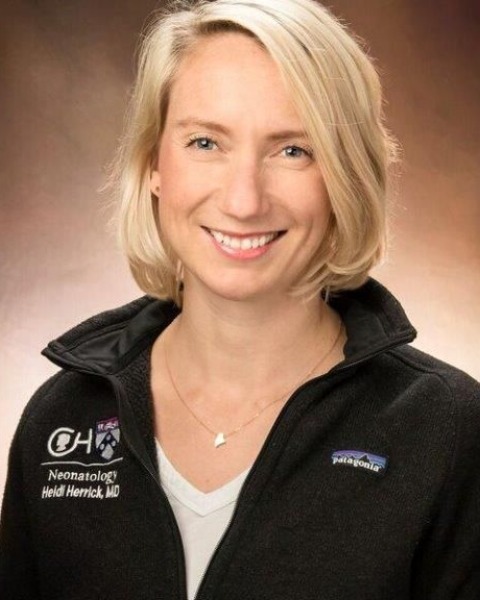Neonatology
Session: Neonatal-Perinatal Health Care Delivery: Practices and Procedures 2
456 - A Mixed Methods Approach to Optimizing Neonatal Huddle Elements
Monday, May 6, 2024
9:30 AM - 11:30 AM ET
Poster Number: 456
Publication Number: 456.3154
Publication Number: 456.3154

Heidi M. Herrick, MD MSCE (she/her/hers)
Assistant Professor
Childrens Hospital of Philadelphia
Philadelphia, Pennsylvania, United States
Presenting Author(s)
Background: Team huddles are vital prior to anticipated resuscitations to improve team coordination and collaboration. In the Special Delivery Unit (SDU), a delivery room (DR) dedicated to neonates with congenital anomalies, the pre-delivery huddle content was developed based on leadership expert opinion and review of the literature. The ideal components and order of a huddle prior to neonatal resuscitation are unknown. Systematic evaluation of huddles prior to newborn resuscitations at our hospital documented significant variability in huddle content and order and frequent omissions of content items (Figure 1).
Objective: To optimize order and categories of DR huddles using a mixed methods approach.
Design/Methods: A mixed-method study consisting of semi-structured interviews and a card-sorting activity with DR huddle leaders, a human-centered approach based on design thinking. In the card-sorting activity, participants were asked to rank the importance of the huddle elements, thinking out loud to explain their reasoning. The semi-structured interview was designed to elicit barriers and facilitators to huddle performance. The card sort data was analyzed in R studio (version 4.3.0) using the “rankaggreg” package. Interview transcripts were analyzed in NVivo (version 12) using a grounded theory approach. Initial coding was based on the interview questions, and subsequent coding focused on emergent themes. Transcripts were coded by 2 independent reviewers who met to discuss the results and reached consensus.
Results: A total of 16 participants (9 attendings and 7 fellows) completed the interviews and card-sorting, with a mean SDU experience of 6.9 years (standard deviation 4.9). 93% of participants would not add additional elements to the current huddle, 7% of participants would divide maternal history into previous pregnancy history, current pregnancy, and fetal interventions. Heat maps were generated to visualize the distance between categories (Figure 2). The optimal order of element components (Figure 3) has a Spearman distance of 4.125, supporting this order of huddle elements.
Conclusion(s): We successfully optimized DR huddle components and order using a mixed-methods approach incorporating human centric design. Next steps include implementation and evaluation of this new huddle design to see if it will affect variability and omissions. Future work will integrate these results into a broader work system analysis and develop quality improvement opportunities.
.png)
.png)

